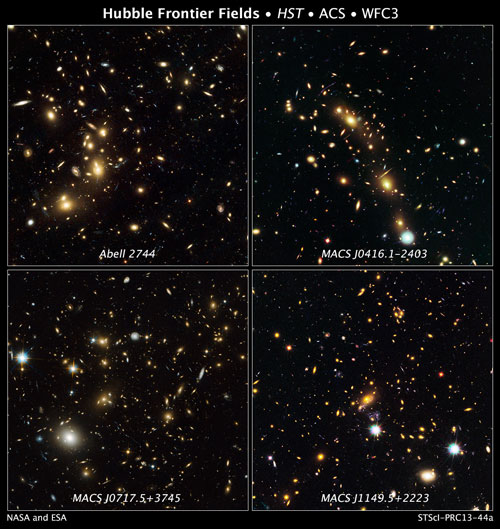 In an ambitious collaborative program, called The Frontier Fields, NASA's Great Observatories are teaming up to look deeper into the universe than ever before. With a boost from natural 'zoom lenses' found in space, they should be able to uncover galaxies that are as much as 100 times fainter than what the Hubble, Spitzer, and Chandra space telescopes can typically see.
In an ambitious collaborative program, called The Frontier Fields, NASA's Great Observatories are teaming up to look deeper into the universe than ever before. With a boost from natural 'zoom lenses' found in space, they should be able to uncover galaxies that are as much as 100 times fainter than what the Hubble, Spitzer, and Chandra space telescopes can typically see.
Oct 24th, 2013
Read more
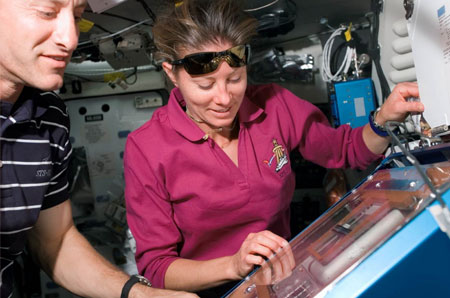 Just 13 days in space may be enough to cause profound changes in eye structure and gene expression, report researchers. Their study is the first to examine eye-related gene expression and cell behavior after spaceflight.
Just 13 days in space may be enough to cause profound changes in eye structure and gene expression, report researchers. Their study is the first to examine eye-related gene expression and cell behavior after spaceflight.
Oct 24th, 2013
Read more
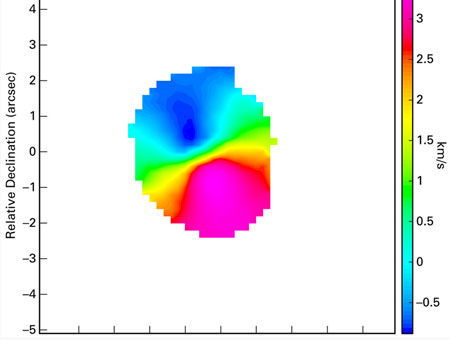 Planets are formed in disks of gas and dust around nascent stars. Now, observations have produced a rare view of a planetary construction site in an intermediate state of evolution: Contrary to expectations, the disk around the star HD 21997 appears to contain both primordial gas left over from the formation of the star itself and dust that appears to have been produced in collisions between planetesimals.
Planets are formed in disks of gas and dust around nascent stars. Now, observations have produced a rare view of a planetary construction site in an intermediate state of evolution: Contrary to expectations, the disk around the star HD 21997 appears to contain both primordial gas left over from the formation of the star itself and dust that appears to have been produced in collisions between planetesimals.
Oct 24th, 2013
Read more
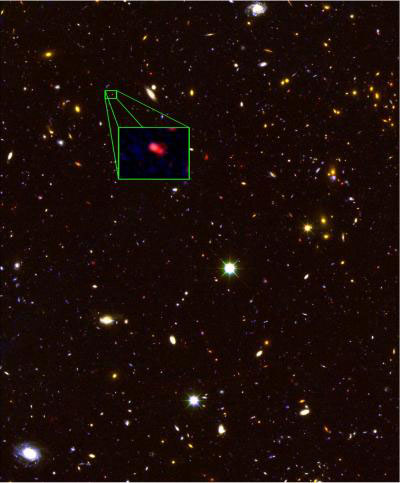 Astronomers have detected the most distant spectroscopically confirmed galaxy ever found - one created within 700 million years after the Big Bang.
Astronomers have detected the most distant spectroscopically confirmed galaxy ever found - one created within 700 million years after the Big Bang.
Oct 23rd, 2013
Read more
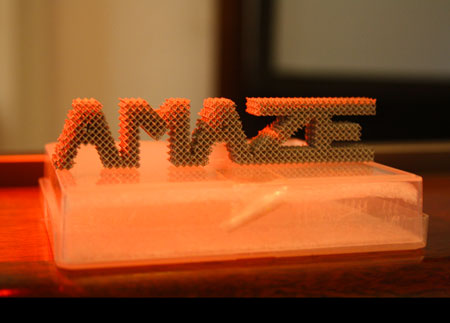 3D printing is getting ready to revolutionise space travel. ESA is paving the way for 3D-printed metals to build high-quality, intricate shapes with massive cost savings.
3D printing is getting ready to revolutionise space travel. ESA is paving the way for 3D-printed metals to build high-quality, intricate shapes with massive cost savings.
Oct 23rd, 2013
Read more
Perimeter Institute Associate Faculty member Avery Broderick will explore how astronomers are now imaging the horizons of black holes and attaining new insights about these enigmatic monsters in the dark.
Oct 23rd, 2013
Read more
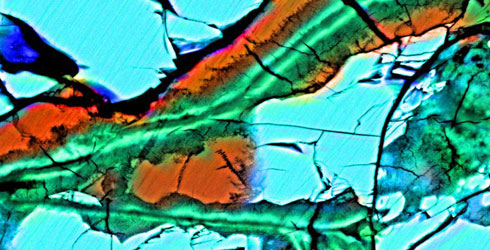 The early Martian atmosphere lost much of its carbon dioxide through a reaction with rock - a reaction that could slow global warming on Earth.
The early Martian atmosphere lost much of its carbon dioxide through a reaction with rock - a reaction that could slow global warming on Earth.
Oct 23rd, 2013
Read more
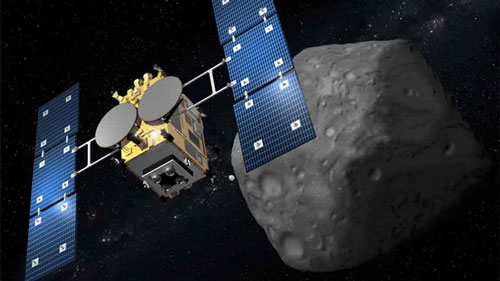 Japanese scientists readying to blast a crater in an asteroid to find out what it is made of said Wednesday they have successfully tested their new space cannon.
Japanese scientists readying to blast a crater in an asteroid to find out what it is made of said Wednesday they have successfully tested their new space cannon.
Oct 23rd, 2013
Read more
NASA's Lunar Laser Communication Demonstration (LLCD) has made history using a pulsed laser beam to transmit data over the 239,000 miles between the moon and Earth at a record-breaking download rate of 622 megabits per second (Mbps).
Oct 23rd, 2013
Read more
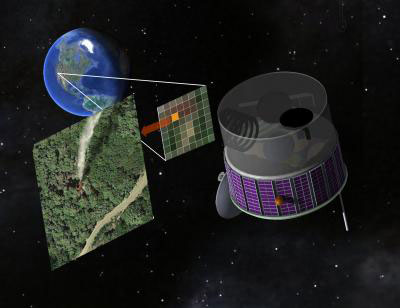 Wildfire detection today is much like it was 200 years ago, relying primarily on humans to spot smoke plumes or flames. UC Berkeley experts in fires, satellites and remote sensing now say that the technology is ripe for a fire-spotting satellite that could snap images of the US West every few seconds to detect fires before they spread with few false alarms. The cost would be a fraction of the country's annual fire-fighting budget.
Wildfire detection today is much like it was 200 years ago, relying primarily on humans to spot smoke plumes or flames. UC Berkeley experts in fires, satellites and remote sensing now say that the technology is ripe for a fire-spotting satellite that could snap images of the US West every few seconds to detect fires before they spread with few false alarms. The cost would be a fraction of the country's annual fire-fighting budget.
Oct 22nd, 2013
Read more
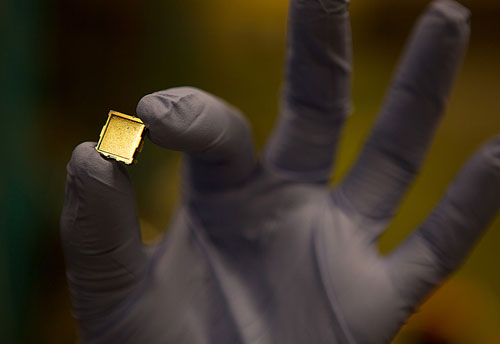 MIT engineer is designing tiny ion thrusters for the next generation of satellites.
MIT engineer is designing tiny ion thrusters for the next generation of satellites.
Oct 22nd, 2013
Read more
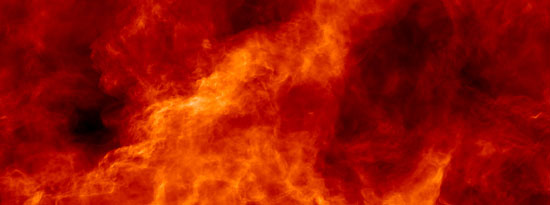 A newly published paper by three UC San Diego astrophysics researchers for the first time provides an explanation for the origin of three observed correlations between various properties of molecular clouds in the Milky Way galaxy known as Larson's Laws.
A newly published paper by three UC San Diego astrophysics researchers for the first time provides an explanation for the origin of three observed correlations between various properties of molecular clouds in the Milky Way galaxy known as Larson's Laws.
Oct 21st, 2013
Read more
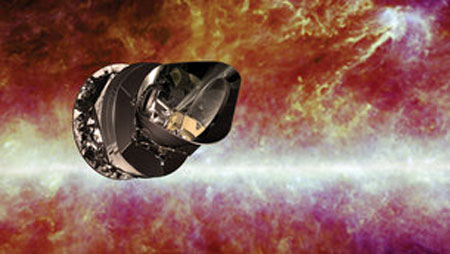 In preparation for its final switch-off on 23 October, mission controllers today fired Planck's thrusters to empty its fuel tanks. The burn is one of the final steps to ensure that Planck ends its hugely successful mission in a permanently safe configuration.
In preparation for its final switch-off on 23 October, mission controllers today fired Planck's thrusters to empty its fuel tanks. The burn is one of the final steps to ensure that Planck ends its hugely successful mission in a permanently safe configuration.
Oct 21st, 2013
Read more
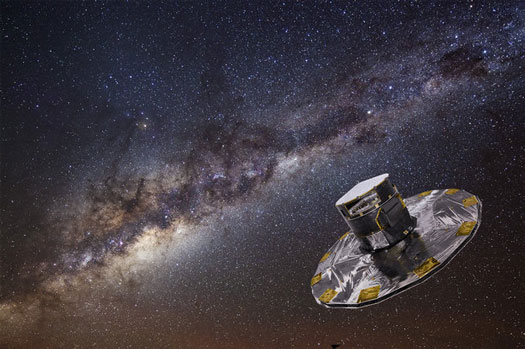 ESA's billion-star surveyor Gaia will be launched from Europe's spaceport in Kourou on 20 November to begin a five-year mission to map the stars with unprecedented precision.
ESA's billion-star surveyor Gaia will be launched from Europe's spaceport in Kourou on 20 November to begin a five-year mission to map the stars with unprecedented precision.
Oct 21st, 2013
Read more
For the threat of meteor strikes large or small, early detection is key, and evacuation may be the only defense needed within the next 1,000 years, according to an asteroid impact expert.
Oct 21st, 2013
Read more
Supermassive black holes: every large galaxy's got one. But how did they grow so big?
Oct 18th, 2013
Read more
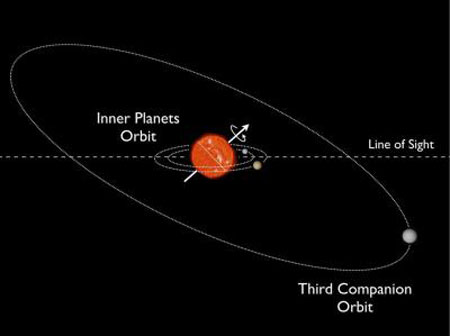 Using data from NASA's Kepler space telescope, an international team of astronomers has discovered a distant planetary system featuring multiple planets orbiting at a severe tilt to their host star.
Using data from NASA's Kepler space telescope, an international team of astronomers has discovered a distant planetary system featuring multiple planets orbiting at a severe tilt to their host star.
Oct 17th, 2013
Read more
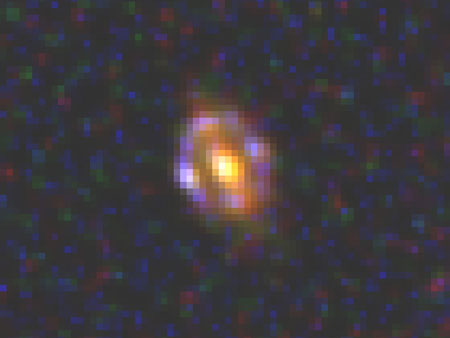 Astronomers have found the most distant gravitational lens yet - a galaxy that, as predicted by Albert Einstein's general theory of relativity, deflects and intensifies the light of an even more distant object. The discovery provides a rare opportunity to directly measure the mass of a distant galaxy.
Astronomers have found the most distant gravitational lens yet - a galaxy that, as predicted by Albert Einstein's general theory of relativity, deflects and intensifies the light of an even more distant object. The discovery provides a rare opportunity to directly measure the mass of a distant galaxy.
Oct 17th, 2013
Read more
 In an ambitious collaborative program, called The Frontier Fields, NASA's Great Observatories are teaming up to look deeper into the universe than ever before. With a boost from natural 'zoom lenses' found in space, they should be able to uncover galaxies that are as much as 100 times fainter than what the Hubble, Spitzer, and Chandra space telescopes can typically see.
In an ambitious collaborative program, called The Frontier Fields, NASA's Great Observatories are teaming up to look deeper into the universe than ever before. With a boost from natural 'zoom lenses' found in space, they should be able to uncover galaxies that are as much as 100 times fainter than what the Hubble, Spitzer, and Chandra space telescopes can typically see. 
 Subscribe to our Space Exploration News feed
Subscribe to our Space Exploration News feed











